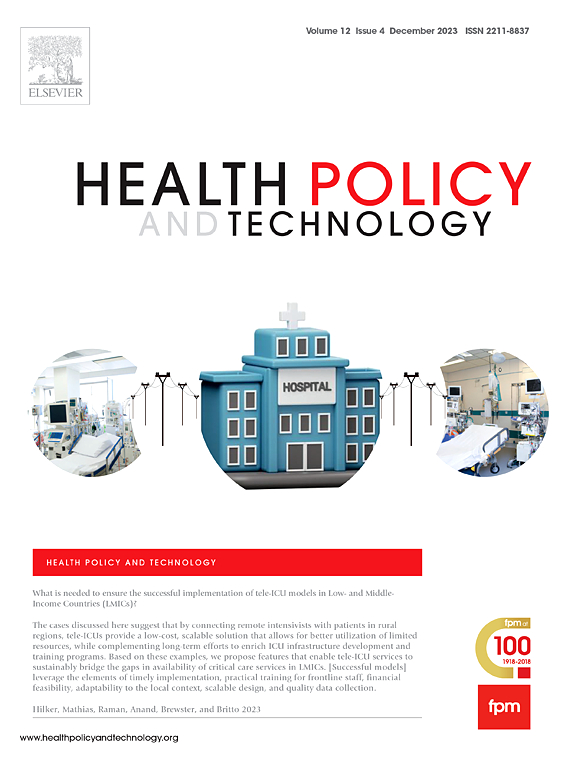Setting cost-effectiveness thresholds for health technologies in Vietnam: A WTP/QALY approach
IF 3.4
3区 医学
Q1 HEALTH POLICY & SERVICES
引用次数: 0
Abstract
Objectives
Cost-effectiveness analysis is considered a foundational element for discussions of fair pricing by policymakers, comparing against a predetermined benchmark referred to as the cost-effectiveness threshold (CET), which determines if technology expenses are eligible for reimbursement. In Vietnam, the CET has not been established, creating a significant gap in the country's health policy decision-making process. This study aimed to establish a threshold for healthcare services by estimating the willingness to pay for a quality-adjusted life year (WTP/QALY).
Methods
A total of 2,261 Vietnamese individuals were enrolled in this study and randomly assigned to scenario-based questionnaires. WTP values were collected via a contingent valuation approach, which included dichotomous bidding and open-ended inquiry. Generalized linear models and logistic regression were used to evaluate the influence of variables on WTP/QALY.
Results
The mean WTP/QALY of the whole sample was USD 12,532 (VND 296.06 million), which is 3.01 times the country's gross domestic product (GDP) per capita. The mean WTP/QALY varied under different scenarios, with the highest in the life-saving scenario at USD 14,893 (VND 351.84 million), followed by the life-extension scenario at USD 14,547 (VND 343.64 million), and the life-improvement scenario at USD 10,146 (VND 239.69 million), ranging from 2.41 to 3.54 times the GDP per capita. Educational attainment, income level, proportion of certainty in treatment outcome, and scenario type substantially influenced WTP/QALY valuation.
Conclusions
The results indicate that the established threshold is slightly greater than that proposed by the World Health Organization. This finding provides a foundational reference point for the development of health policy in Vietnam, ensuring fair pricing and effective allocation of healthcare resources.
求助全文
约1分钟内获得全文
求助全文
来源期刊

Health Policy and Technology
Medicine-Health Policy
CiteScore
9.20
自引率
3.30%
发文量
78
审稿时长
88 days
期刊介绍:
Health Policy and Technology (HPT), is the official journal of the Fellowship of Postgraduate Medicine (FPM), a cross-disciplinary journal, which focuses on past, present and future health policy and the role of technology in clinical and non-clinical national and international health environments.
HPT provides a further excellent way for the FPM to continue to make important national and international contributions to development of policy and practice within medicine and related disciplines. The aim of HPT is to publish relevant, timely and accessible articles and commentaries to support policy-makers, health professionals, health technology providers, patient groups and academia interested in health policy and technology.
Topics covered by HPT will include:
- Health technology, including drug discovery, diagnostics, medicines, devices, therapeutic delivery and eHealth systems
- Cross-national comparisons on health policy using evidence-based approaches
- National studies on health policy to determine the outcomes of technology-driven initiatives
- Cross-border eHealth including health tourism
- The digital divide in mobility, access and affordability of healthcare
- Health technology assessment (HTA) methods and tools for evaluating the effectiveness of clinical and non-clinical health technologies
- Health and eHealth indicators and benchmarks (measure/metrics) for understanding the adoption and diffusion of health technologies
- Health and eHealth models and frameworks to support policy-makers and other stakeholders in decision-making
- Stakeholder engagement with health technologies (clinical and patient/citizen buy-in)
- Regulation and health economics
 求助内容:
求助内容: 应助结果提醒方式:
应助结果提醒方式:


